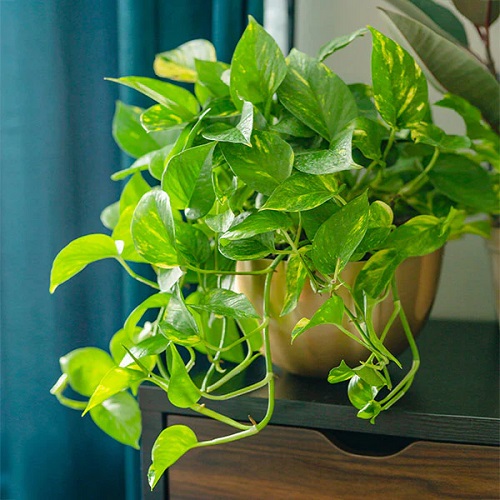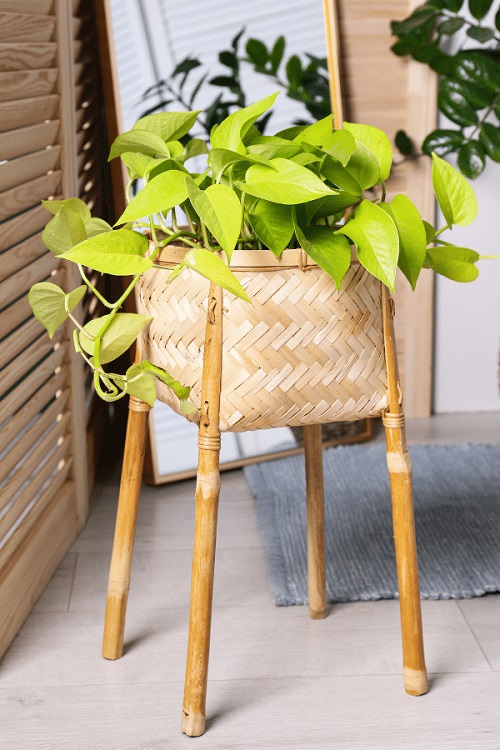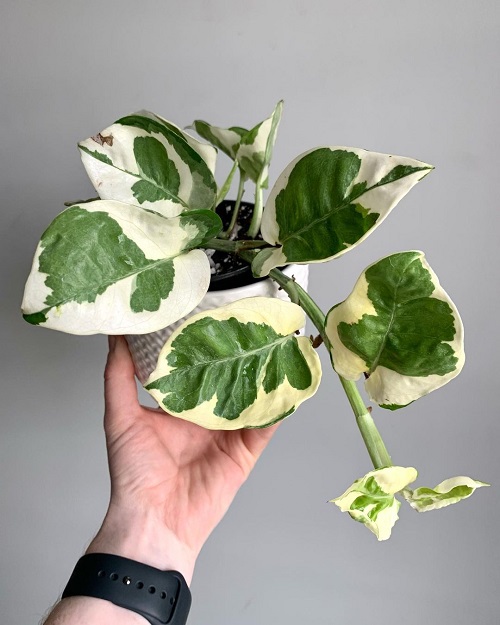This list of the most beautiful and popular pothos will bring life and lush greenery to every corner of your home!
With numerous varieties to choose from, finding the right one might seem daunting. To help you out, we’ve listed the most popular Pothos that succinctly break down the unique characteristics of each variety, helping you effortlessly select the perfect one to enrich your space!
Most Popular Pothos Varieties
1. Golden Pothos
This beauty earned the name ‘devil’s ivy’ due to its uncanny ability to survive even in dark spots with low sunlight. However, if you want to flaunt its lush charm with subtle variegation, a few hours of mild sunlight exposure can do the job.
2. Neon Pothos
The neon pothos lives up to its name with its bright neon foliage and beautiful gloss that tends to intensify its hue under sunlight. Plus, its signature trailing habit makes it an elegant, low-fuss option for hanging baskets or high-held spots.
Fun Fact: It is popular by the name ‘money plant’ in South Asian countries. Wait, it doesn’t actually grow cash but is considered a token of good luck. Although, now that I think about it… a cash-growing plant would be pretty convenient, wouldn’t it?
3. Marble Queen

Again, this regal plant earned its common name from its variegated leaves, which give a marble-like appearance. Marble Queen leaves have an elegant balance between the white and green patches, making them a steadfast option for indoor decor.
4. Baltic Blue
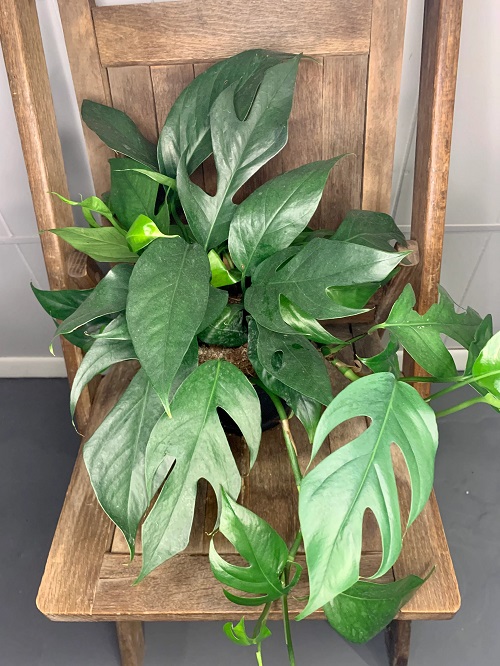
Now, this could be a tricky guess. The leaves aren’t blue but green with blue undertones, surely that’s as close to blue as a Pothos can get. Plus, the leaves have these dramatic fenestrations that make for some very cutting-edge decor, if you will excuse my pun.
5. Manjula
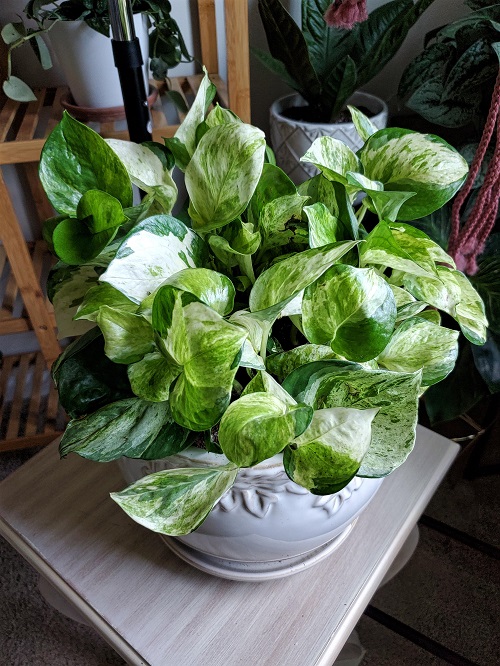
If Marble Queen couldn’t satisfy your appetite for variegation, maybe the Manjula Pothos can. This plant sports three colors—white, cream, and green—with white being the most dominant color. Just ensure to shield it from long sunlight exposure or those white tips will turn into a crispy brown.
6. Snow Queen
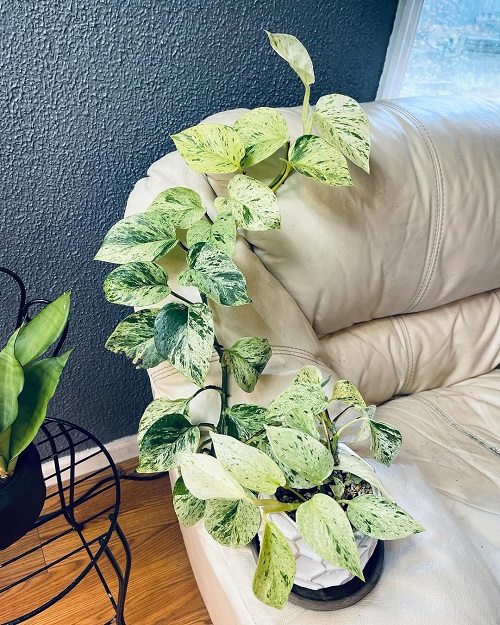
If the Manjula was still not icy enough for you, feel free to try out the Elsa of the Pothos family—the Snow Queen. This frosty-looking plant features almost pale leaves with subtle green streaks. However, don’t let the name fool you; it is not a fan of low temperatures and is instead comfortable in warm, humid conditions, just like every other Pothos.
If you are into white Pothos, here‘s a list you shouldn’t miss!
7. Cebu Blue
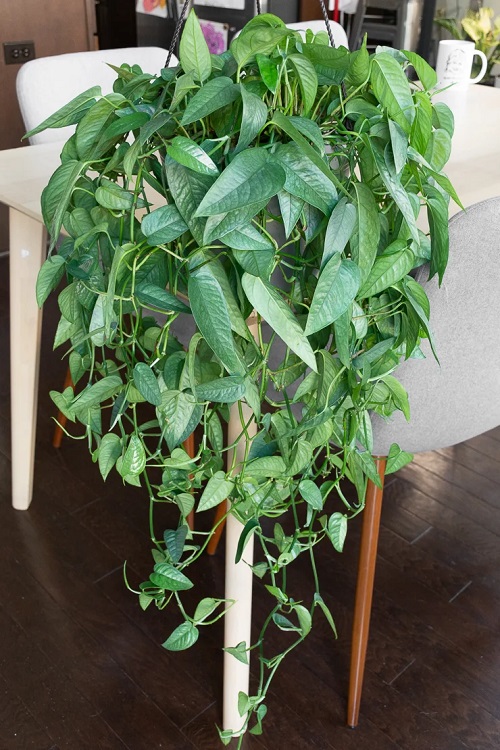
The Cebu Blue Pothos bears stunning, silvery blue-green leaves that are pretty picturesque and elegant. Young leaves are typically heart-shaped, but as the plant matures, especially when provided with support to climb, the leaves can develop fenestrations similar to those seen in Monstera plants.
8. N’Joy
The N’Joy Pothos is one of those variegated Pothos that would also climb beautifully if provided with sturdy support. Smaller leaves and a more pronounced variegation distinguish N’Joy from its cousins. Plus, this beauty is known for being a slow grower in the Pothos family.
9. Glacier
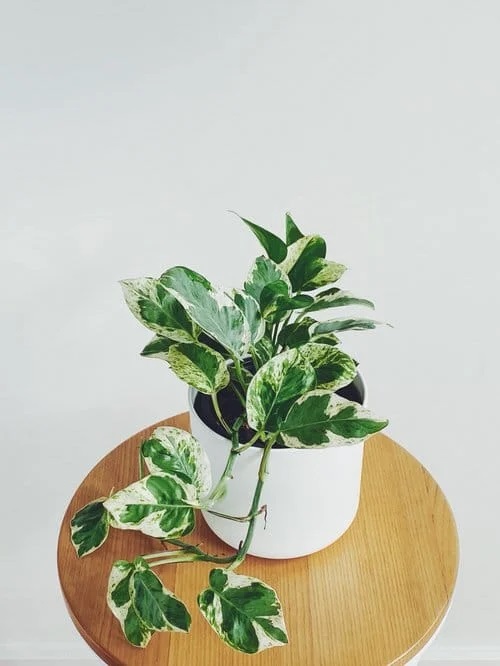
The Glacier Pothos is very similar to the N’Joy Pothos but with much broader leaves. The leaves are wrinkled and speckled, lending it the name ‘Old Man N’Joy’. But fear not—you definitely don’t need to be a senior citizen to fall in love with this delightful variety of Pothos!
10. Silver Satin “Pothos”
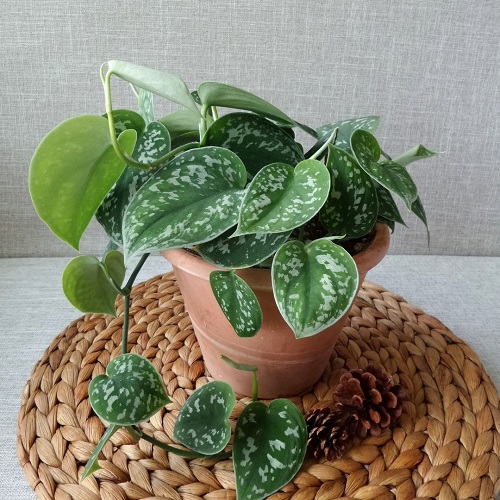
The Silver Satin Pothos is actually not a Pothos at all! Its scientific name is Scindapsus Pictus ‘Exotica’, meaning it is less closely related to this genus. Not being a true Pothos doesn’t stop this plant from being incredibly low-maintenance, appealing to look at, and soft to the touch. It sports leaves that are beautifully patterned with patches of white, bearing the look and feel of satin.
So, who cares if it’s not a true Pothos? It’s still a showstopper in the plant world, ready to thrive in your home with hardly a fuss!

